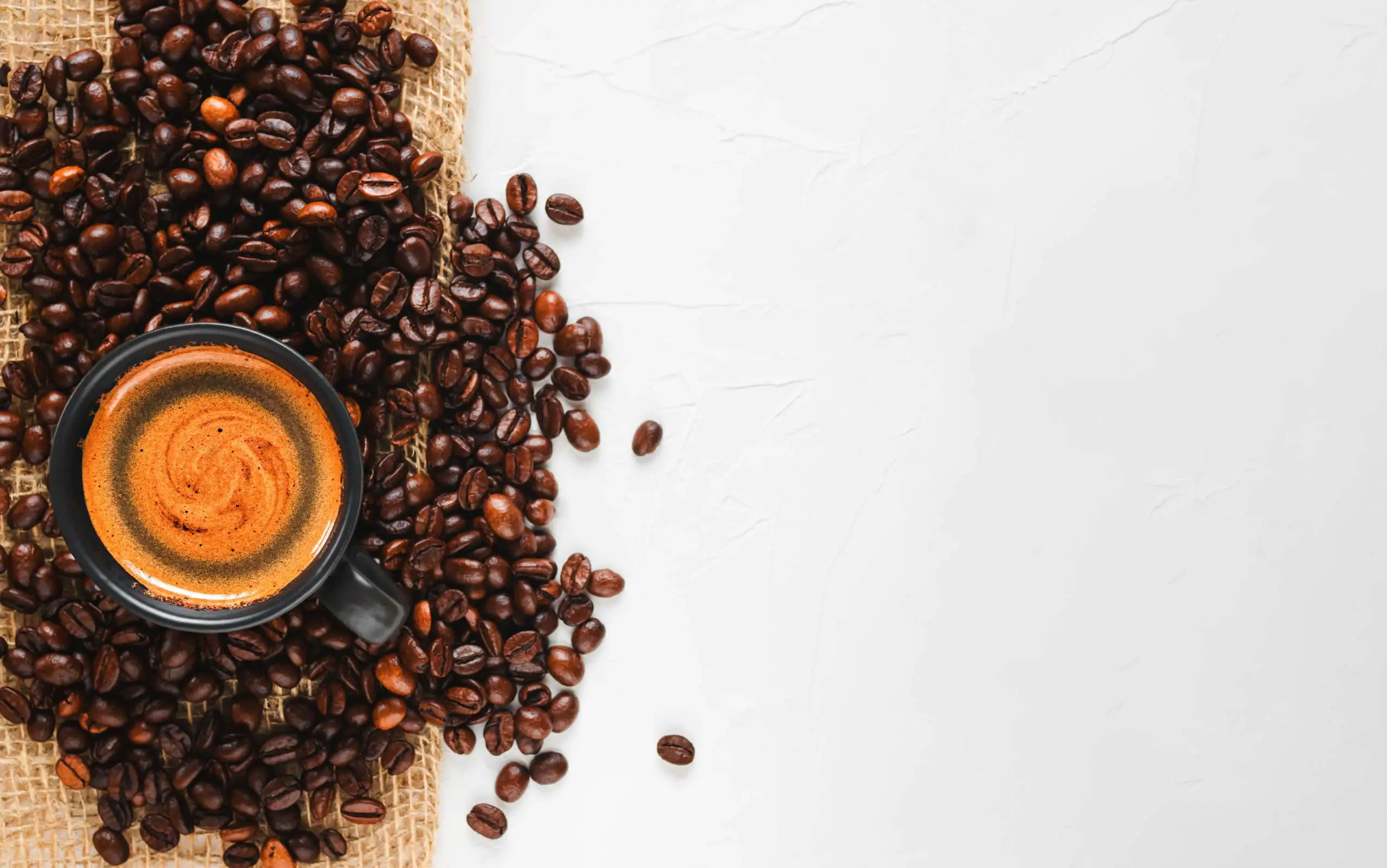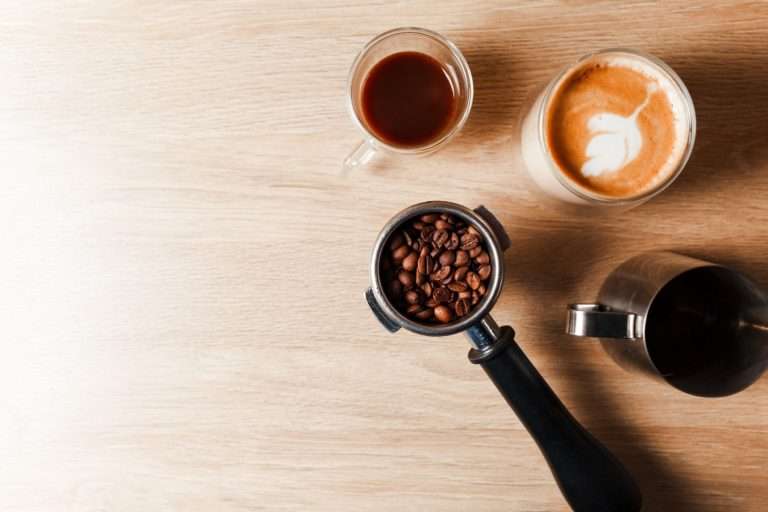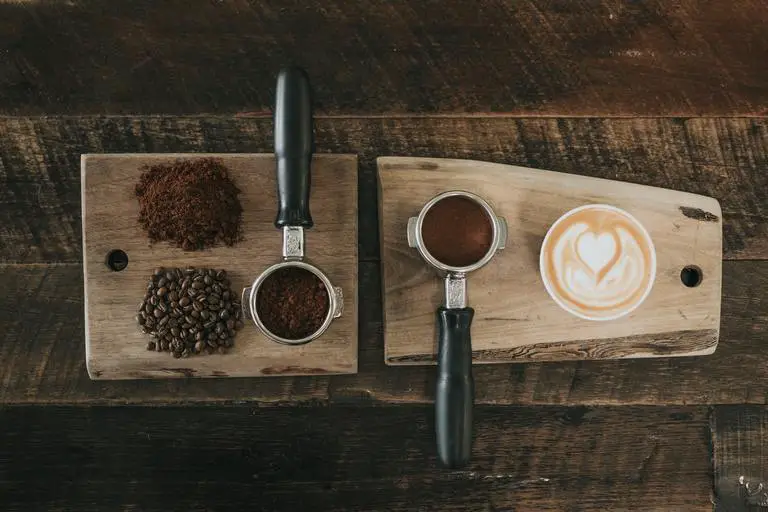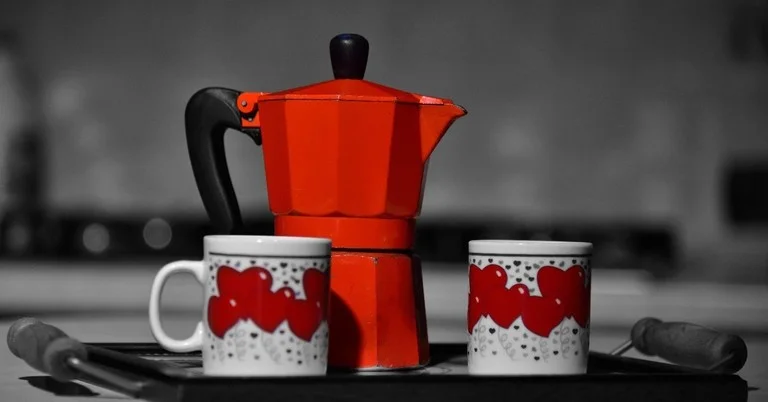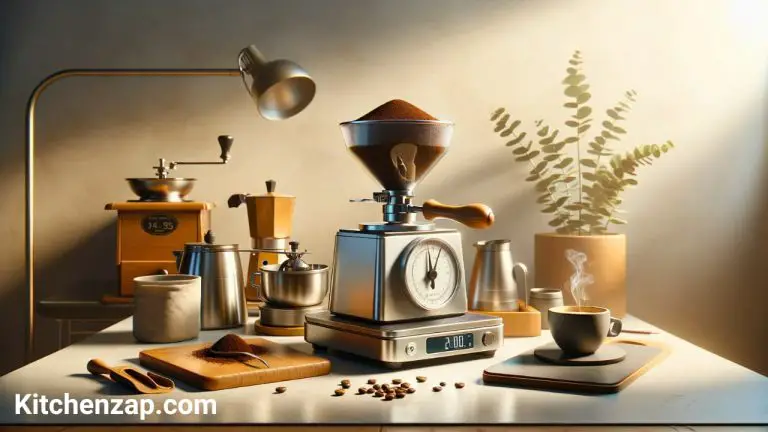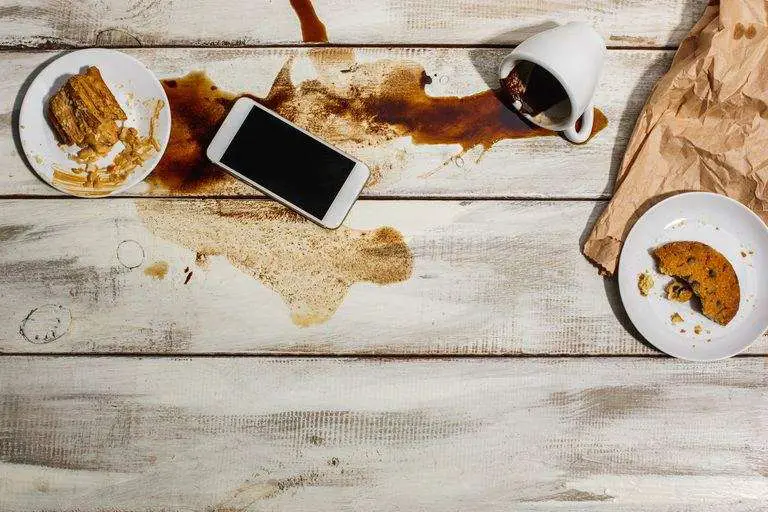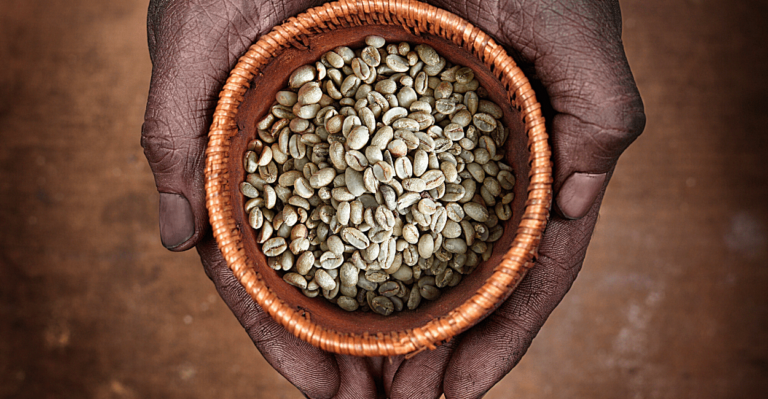What Are the Coffee Roasting Levels? 8 Interesting Facts You Should Know
Have you ever wondered what the coffee roasting levels are? Perhaps you have heard about the light roast and dark roast, but this isn’t all.
There is a lot you still need to learn about coffee roasting. Every coffee enthusiast should understand the various coffee roasting levels to know what works for them.
There is a lot you still need to learn about coffee roasting. Every coffee enthusiast should understand the various coffee roasting levels to know what works for them.
All the types of coffee drinks that exist have their own unique taste and characteristics, which is a good thing to suit different caffeine needs.

To understand your favorite coffee drink and how to make it, you need to learn about the various coffee roasting levels.
If you have been confused about the coffee beans roasting levels, don’t worry, as this text will give you all the answers.
Coffee Roasting Process
The coffee roasting process involves three main stages, including the drying stage, browning stage, and development stage.
Let’s find out what happens in each roasting stage:
Drying Stage
A green coffee bean has a humidity of about ten percent, so you need to dry it out before you roast them.
The drying stage is faster as it usually takes about four to five minutes when using a traditional drum roaster.
At this stage, you need to be very careful with the heat to avoid burning the coffee beans before the actual roasting.
The temperature in the drying stage should not go beyond 160 degrees Celsius. This stage allows the coffee beans to collect enough energy for the next stages.
Browning Stage
This stage happens after 160 degrees Celsius when the coffee beans begin to turn brown.
It involves a reaction known as Mailard, which causes browning. In this reaction, reducing sugars react with amino acids to produce various coffee aromas.
Color compounds known as melanoids are also formed in the browning stage. Roasting in this stage slows down naturally to allow for flavor development.
Towards the end of the browning stage, the coffee beans start to pop. This is referred to as the first crack as the roasting stage begins.
Development Stage or Roasting Stage
At the beginning of the roasting stage, the reaction becomes exothermic, and the coffee beans start to crack.
This is because the beans had already collected much energy that makes them explode.
During this stage, the desired aroma compounds start developing. However, if you don’t slow down the roast, the beans get burnt easily, and you end with smoky-tasting coffee with a very sharp flavor.
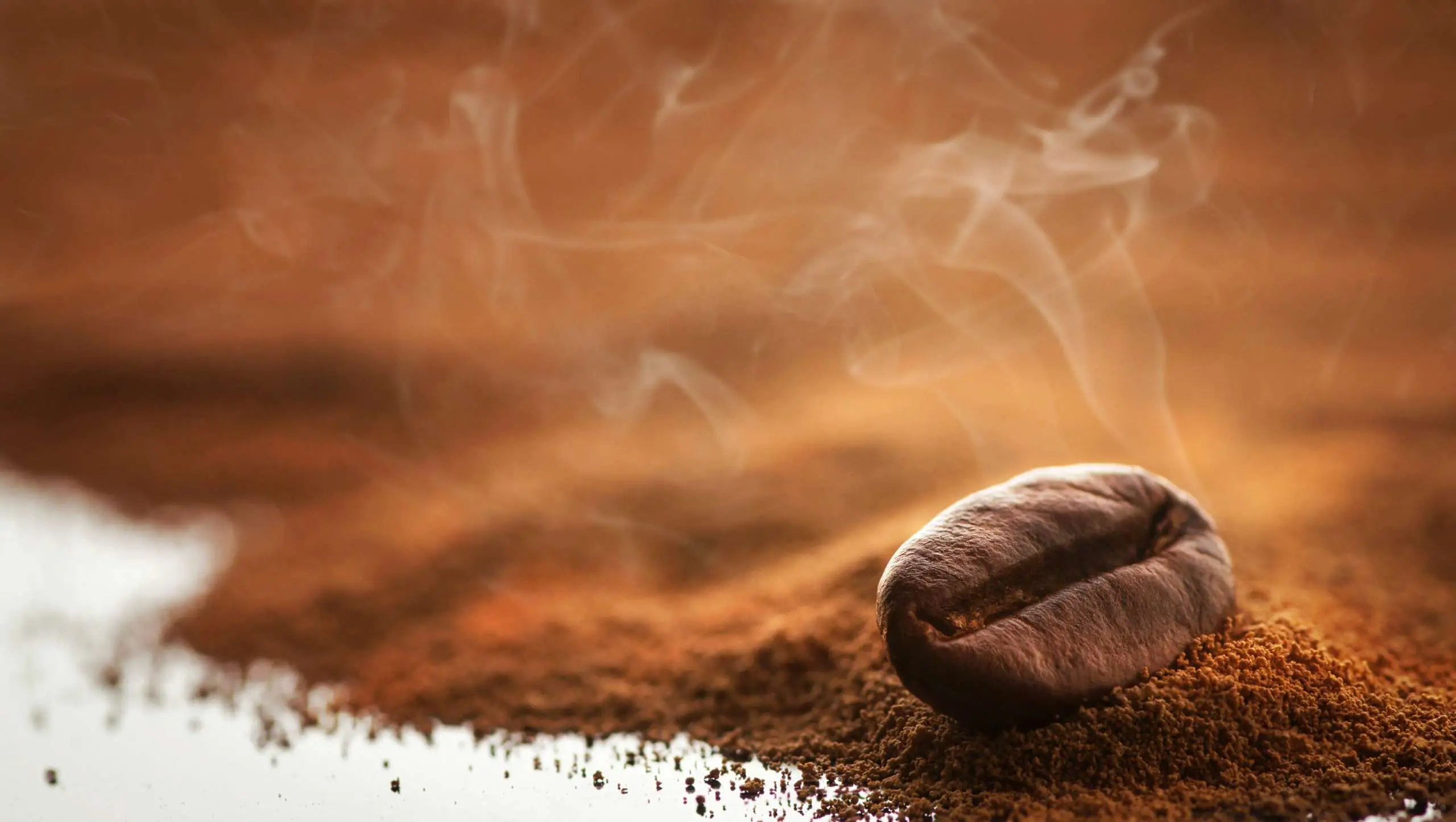
Depending on the flavor profile you want and the desired roast degree, the development stage should typically be 15 to 25 percent of the total roasting time.
8 Interesting Facts About Coffee Roasting You Should Know
1. Roasting Unlocks the Coffee Flavor
Roasting brings the coffee flavor by triggering some chemical reactions. However, these chemical reactions also make the coffee beans stale.
During coffee roasting, the beans are usually heated to an internal temperature of around 204 degrees Celsius.
The extreme heat causes the reducing sugars and amino acids inside the coffee bean to react. They decrease as gasses build up.
This makes the coffee bean hard with a brown or dark brown color, based on the roasting degree reached.
As the coffee bean hardens, a fragrant oil known as caffeol is released. This oil is largely responsible for the sweet coffee aroma you love.
As the roasting continues, coffee beans continue to give out more carbon dioxide, which will soon make the coffee taste stale.
Research reveals that coffee roasting releases some compounds which are responsible for aroma loss.
This is the main reason why coffee beans are exported while still green and roasted at their final destination where consumers have fast access.
2. Coffee Roasts Are Classified into Four Colors
Coffee roasts are usually divided into four colors, including light, medium, medium-dark, and dark roasts.
Generally, the darker the coffee beans, the longer they have been roasted. This is because the natural sugars in the beans change from sweet to caramel then to burnt flavors during roasting.
For milder coffee varieties, you should roast them lightly to retain the original flavor of the bean.
Since they don’t go through extreme heating for a longer time, they have a brown color with no oil on their surface.
Lightly roasted beans can reach an internal temperature of up to 400 degrees Fahrenheit during the roasting process.
Medium roast coffee beans have a darker shade but still have no oil on their surface.
They balance the original flavor of the green coffee bean and the flavors achieved during the roasting process.
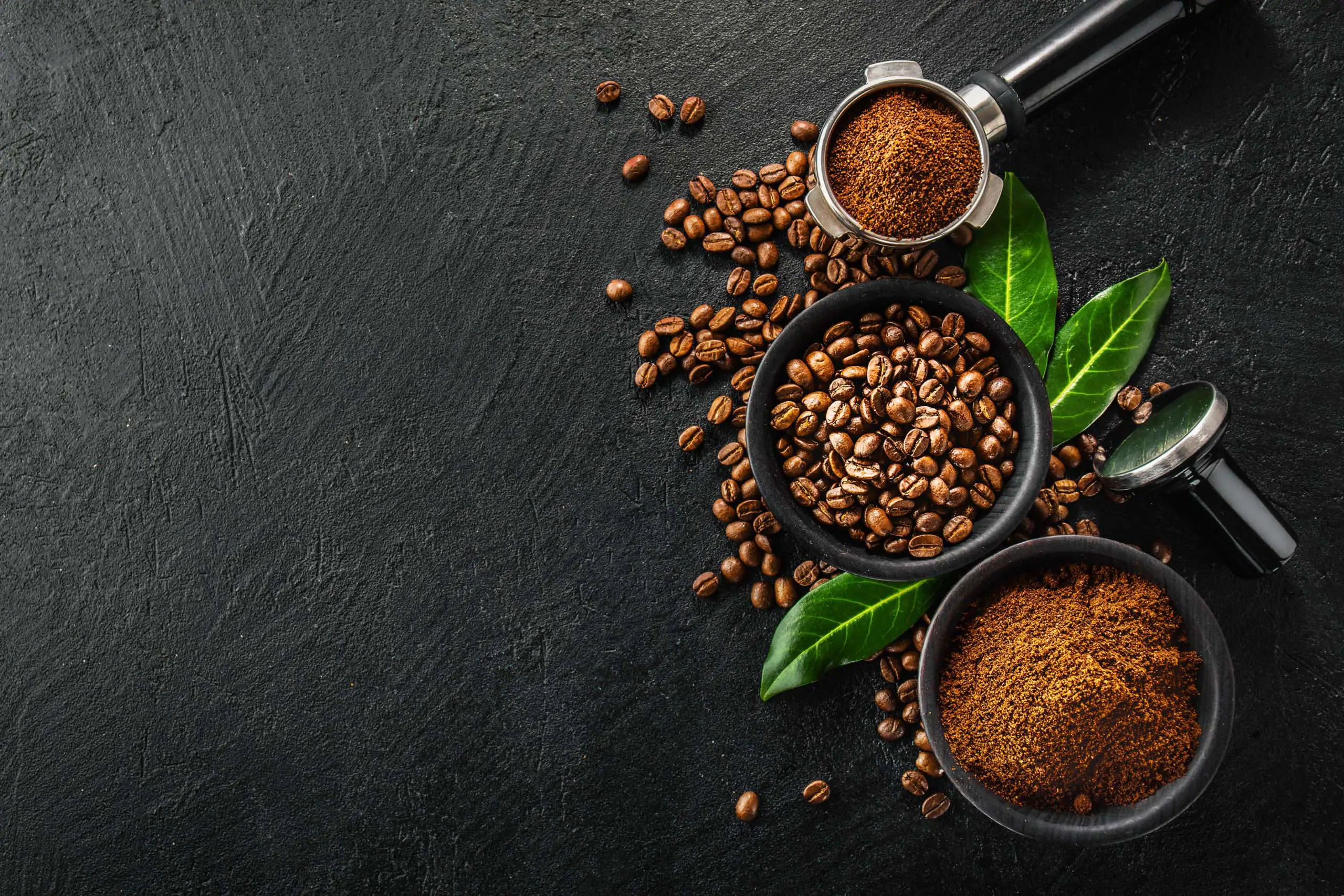
Medium-dark roasted beans have a dark brown color, and they may have some oil on the surface.
At this level, you will be able to taste and distinguish the intense roasting flavors produced. Medium-roasted coffee beans have more spice and body than lighter roasts.
Dark roast coffee beans are almost chocolatey in color, and they have a sheen of oil on their surface.
The original flavor of coffee is hidden in this roast as the roasting flavors are very outstanding.
With these roasts, you can make a cup of coffee that is more full-bodied with intense roasting aromas.
3. Light Roast vs Dark Roast: Caffeine Levels
Most people say that darker roasts have more caffeine than lighter roasts, but others say that the opposite is real.
This leaves most coffee lovers confused about the caffeine levels between dark and light roasts.
Surprisingly, both sides are wrong. This is because caffeine content remains largely the same throughout the roasting process.
But this isn’t all. Coffee bean density changes during roasting. Dark roasts have less weight than lightly roasted coffee beans.
Hence, we can say that caffeine levels depend on how you measure them. The same amount of coffee in terms of weight will have a different coffee bean number.
So, if you use the same amount of dark roast and light roasted coffee to make two different cups of coffee, you will end up with the same caffeine content in both cups.
You may fail to realize this as you cannot count the total number of beans you use. Instead, you just measure them by weight.
This is the main reason why dark roasts tend to have more caffeine than light roasts.
4. Freshly Roasted Coffee Beans Need to Degas
After roasting is complete, you might want to use your beans immediately, especially if you have heard about the talk of staling.
However, this is not a good idea. You shouldn’t use the freshly roasted beans immediately after roasting as the beans are still degassing.
During the roasting process, coffee beans start to release gases, and this continues for many days.
If you use the roasted coffee beans too soon, the gas will lead to a metallic flavor, which makes the coffee taste terrible.
Unfortunately, as degassing happens, other coffee substances that give the fresh beans amazing aromas also get lost.
So, you need to get the right balance between saving the wonderful aromatics and degassing.
To find the right balance, there are few things you need to keep in mind.
Dark roasts usually degas faster than light roasts. Also, longer roasts degas more quickly than faster ones.
Most carbon dioxide is released in the first 24 hours after roasting. This means that coffee beans are ready for use after about two to 12 days, depending on the roasting level.
If you buy your coffee beans when they are already roasted, you will want to ask your barista how long you need to wait to get the best flavor.
5. The Post Harvesting Process Impacts How the Beans Should Be Roasted
Coffee beans are actually the seeds of the coffee fruits, also referred to as the cherry. These cherries have a fruity layer on the outer part that covers the beans.
The coffee cherries have to be processed to get the seeds out and dry them out for roasting.
Different coffee growers and producers use varied processing methods. Some even leave the whole cherry to dry in the sun before removing the outer part.
Other producers remove the skin and pulp before leaving the coffee beans to dry out in the sun.
Research reveals that the interaction between processing and roasting techniques can have major effects on the coffee aroma.
This is why artisan coffee producers adjust the roast profile to the processing technique used to bring out the different coffee flavors.
Coffee made with beans dried inside the coffee cherries tends to have fruity flavors that are well unlocked with shorter light roasts.
On the other hand, beans dried after being removed from cherries have vanilla, chocolate, caramel, and fudge flavors and aroma.
Such beans work best with longer roasts where a steady level of heat intensifies the flavors and the aroma.
However, this is not the only factor that counts when it comes to deciding how to roast the coffee beans.
Roasters take into account other things like the coffee’s country of origin, and the altitude at which the coffee was grown.
Read More:
6. Cooling is a Vital Part of Roasting
While cooling is not always included in the roasting steps, it’s an important part of the process. Roasters cool the coffee beans after they reach the right temperature.
After roasting is complete, the roasting machine pours the beans into a cooling tray where they are evenly distributed.
As the tray rotates to distribute the beans, the air is drawn through tiny holes to cool them off at a stable rate.
This also gives the roaster a chance to check for defective beans known as Quakers to remove them.
Quakers are coffee beans with low sugar contents, so they don’t turn brown like others when roasted.
7. Bold is Different from Dark Color Roast
Most people think that bold coffee means dark roast. But this is not true.
Bold coffee can be made with any roast level and it has more caffeine content. It requires you to use a higher coffee-water ratio when brewing.
The boldness arises from the fact that more coffee is used to make each cup, leading to a very strong coffee flavor and more caffeine.
Boldness also varies in different cups of coffee depending on the roast and the brewing process.
8. Roasting Time and Degree Matters A Lot
The art and science of roasting require some experience and attentiveness. While the main concept is heat application, you can influence the coffee’s acidity and flavor. For instance;

If you roast the coffee slowly before the first crack in the roasting process, it will increase the texture and body.
On the contrary, roasting faster with more heat prior to the first crack will increase the acidity level, resulting in a crisp and clean finish.
The roasting degree is measured by a color meter or by tasting. Light roasts have a light brown color and have a more acidic taste, while dark roasts have a dark brown color with a bitter taste.
Light roast coffee also has fruity flavors due to high amounts of organic compounds. As the roasting goes further, these compounds are broken down and burnt.
Hence, the dark coffee roasting degree leads to roasty and burnt flavors with less organic compounds.
Traditional Coffee Roasting Levels
While there are many names used when talking about roasted coffee, there are three main coffee roasting levels. This includes the light, medium, and dark roast.
Most unique names used in coffee roasting are specific to certain countries. Some are even related directly to the geographical regions where roasting takes place.
The three main roasting degrees are further classified in various traditional coffee roasts levels. They include:
Cinnamon Roast
Cinnamon roast, also called Light roast, refers to coffee roasted to 385 degrees Fahrenheit or 196 degrees Celsius.
It has a lighter color than the American roast and has a little sweetness with a sharp acidic taste.
Some roasters describe this roast as grassy with a toasted grain-like taste. This roaster is achieved by removing the coffee beans from heat before the first crack.
New England Roast
This coffee roast is heated at 205 degrees Celsius which is lower than American traditional roasts.
Just like Cinnamon Roast, it is moderate light brown with a few differences depending on the color of the beans.
A cup from this coffee will have a complex sharp and a little acidic taste.
American Roast
American roast is the official name given coffee to 410 degrees Fahrenheit, or 210 degrees Celsius. It’s the traditional taste you will find in most American coffee shops or restaurants.
This roast level is usually characterized by medium brown color, slight acidity, and some organic flavors.
While the American roast doesn’t have oils on the surface, it brings the best out of a coffee bean by producing rich-tasting coffee.
While the American roast doesn’t have oils on the surface, it brings the best out of a coffee bean by producing rich-tasting coffee.
City Roast
City roast represents coffee roasted to 426 degrees Fahrenheit or 219 degrees Celsius. It’s a bit darker than the American roast and tends to have a smooth, sweet, less acidic taste.
In this roasting level, the coffee beans fully complete the first crack, which results in dry medium brown coffee.
City roast coffee beans produce a very flavorful coffee without the intense characteristics obtained from the roasting process.
Vienna Roast
Vienna Roast is coffee roasted to 446 degrees Fahrenheit or 230 degrees Celsius. It’s usually darker than the traditional American roast and lighter than the French roast.
When done properly, the Vienna roasting level produces lovely oils on the coffee beans which play a great role in making a perfect cup of smooth and less acidic coffee.
Full City Roast
These are coffee beans roasted up to 225 degrees Celsius Right at the second crack. By appearance, these beans will be dark in color compared to other traditional roasts and will have a tiny droplet of oil on their surface.
This traditional roast, also known as the medium-plus, has a smooth taste and is a bit acidic.
Italian Roast
Heated to up to 245 degrees Celsius, this coffee roast is much darker compared to other traditional roasts. Coffee from this roast is bittersweet and has a charcoal-like overlay.
Italian roast has a thin body thus they are mixed with Robusta beans to increase the body while blending.
French Roast
French roast simply means coffee roasted at 240 degrees Celsius. The beans are darker compared to other traditional coffee roasts and have a shiny coat due to oils.
French roast simply means coffee roasted at 240 degrees Celsius. The beans are darker compared to other traditional coffee roasts and have a shiny coat due to oils.
How to Choose Your Best Coffee Roast Level
As you might have noticed, coffee roast levels play an essential role in the coffee’s flavor, aroma, and tasting notes.
A light roast will not produce a cup of coffee that tastes the same as that of a dark roast. Flavors and aromas vary, based on the type of roast and the brewing method used.
Some people think that using a light roast guarantees natural coffee flavors and strong aromas, but this isn’t always the case.
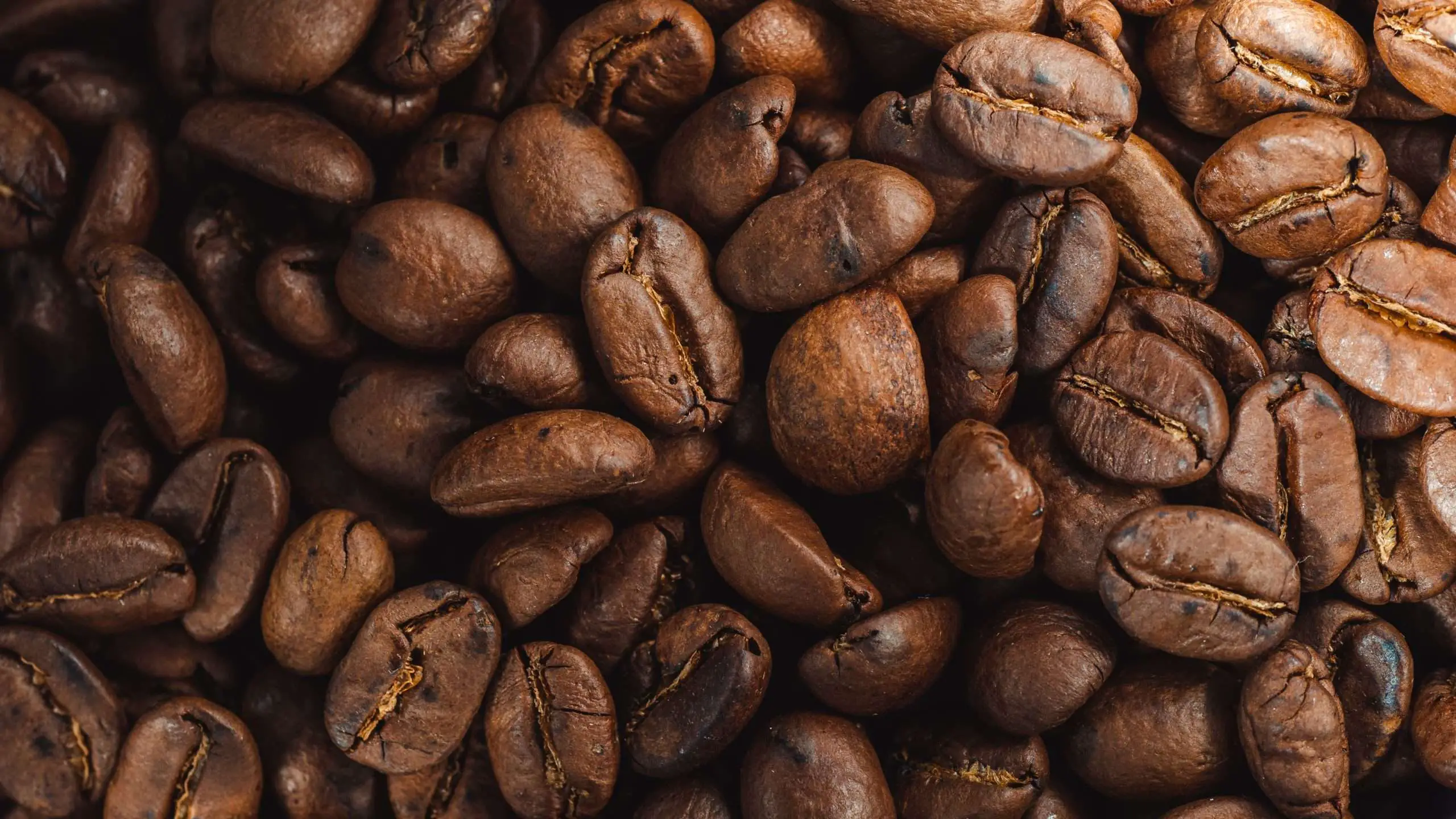
So, you might be asking yourself what is the best coffee roast level? Or how should you roast your coffee beans to make your favorite cup of coffee?
But this shouldn’t get you worried. Here are some tips:
- If you enjoy a balanced cup of coffee with fruity flavors, use medium roast coffee like City roast or Full City roast.
- Always keep in mind that lighter roasts have more acidity than darker roasts, but darker roasts are more bitter.
- If you like full-body, rich cowboy coffee with boldness, you can go for dark roasted coffee like Vienna, Italian, and French roasts.
- Brew your coffee with light roasts like Cinnamon roast if you are craving organic coffee taste and flavors
- Always read the descriptions provided to see what’s the best roast for you.
1. What are the different roasting levels of coffee?
Here are the main different coffee roasting levels:
Light roast: Light brown in color, has a light body and mild flavor that highlights the coffee’s origin characteristics. Acidity, aroma, and caffeine levels are accentuated.
Cinnamon roast: Lightest roast before first crack, even lighter than light roast.
Medium roast: Moderate light brown color, balanced flavor, less acidity. This is a popular roast level that appeals to most coffee drinkers.
City roast: Roasted to the end of first crack, a medium light brown color.
Full City roast: Darker brown than city roast, but before second crack. A medium roast with some oil sheen.
Dark roast: Very dark brown in color with shiny, oily surface. Robust, bitter flavor with minimal acidity and origin character. Low caffeine.
French roast: Darkest roast, second crack is reached, black and oily appearance. Intense smoky flavor.
Italian roast: Almost black in color, dark oily surface, extremely dark roast. Intense bittersweet flavor.
The degree of roasting impacts the bean’s density, moisture content, oil content, acidity, and caffeine levels. Personal taste preferences determine ideal roast level.
2. What is the best roast level for coffee?
There is no definitive “best” roast level for coffee, as it comes down to personal taste preferences. However, here are some general guidelines on finding an optimal roast level:
– If you enjoy bright, fruity flavors and higher acidity, a light or medium light roast is best. Light roasts highlight the inherent character of the bean.
– For a balance of acidity, body, and origin flavor, a medium roast is a good choice. Medium roasts have a broader appeal to most coffee drinkers.
-For deeper, darker coffee with bittersweet, chocolatey notes, a dark or very dark roast is preferred. These roasts mute acidity and origin distinctions.
– For coffee with milk or cream, a medium or medium-dark roast allows the dairy to complement coffee flavor. Very dark roasts can overpower milk’s sweetness.
For espresso-based drinks, a darker roast is typically used so the roast flavors complement the crema. Lighter roasts would exhibit too much acidity.
– Blends can incorporate a balance of light, medium and dark roasted beans to create complex flavor.
The best recommendation is to experiment across the roast spectrum to discover your personal tastes and preferences. The optimal roast level highlights flavors you most enjoy.
3. What are the most common roast levels?
The most common coffee roast levels are:
Medium roast – This is by far the most popular roast level, offering a balanced flavor that appeals to a wide range of coffee drinkers. It has moderate acidity and some origin character. Popular for daily drinking.
Dark roast – The second most common roast, much darker brown than medium roast. Provides a smoother, heavier body with muted acidity. Common for espresso blends and Italian style roasts.
Light roast – Less common than medium and dark roasts, but gaining popularity among specialty coffee shops. Light roasts preserve origin character and have complex fruit tones.
Medium-dark roast – A roast between medium and dark, with a bittersweet chocolate flavor. Provides a compromise between medium and dark roast qualities.
Very dark “French” roast – Along with dark roast, commonly used for espresso blends. Very dark brown, nearly black, with roasted smoky flavors.
Cinnamon to City roast – Lighter roasts before first crack. Rarely seen except with specialty light roast brands.
The average consumer is still most familiar with the medium and dark roast profiles. However, light roasts are gaining recognition among coffee enthusiasts.
Final Thoughts
Coffee roast level is one of the essential factors that determine the taste of a cup of coffee. That’s why you need to find out what roast degree works best for you.
The best coffee roasting level for you depends on your preferences and how you like brewing your coffee.
For those who love percolated coffee, medium roast is the best to avoid bitter coffee but still get strong, rich-tasting coffee.
If you love brewing espressos, you will have more options to choose from as you can use any darker roast like Vienna, Italian, French, or Full-city roasts.

